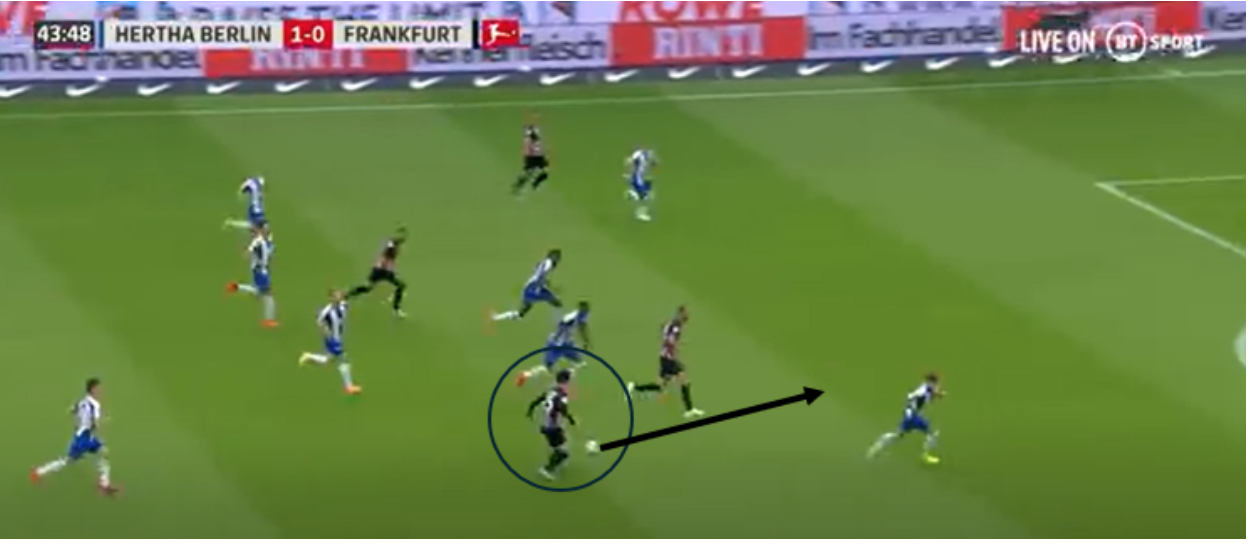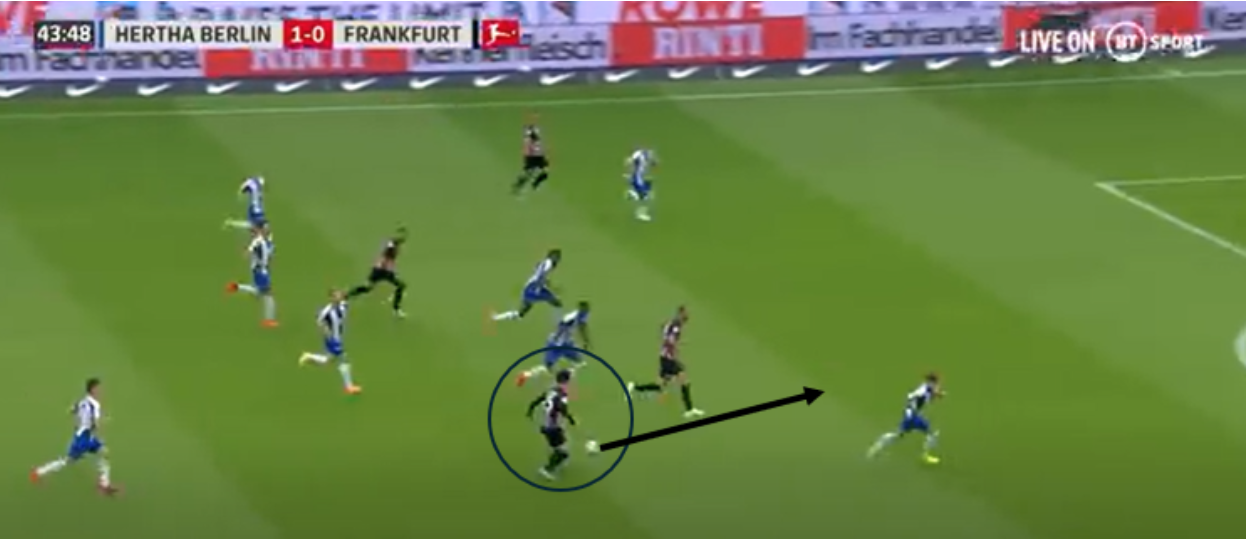The Japanese Houdini – How Daichi Kamada Can Help Take Crystal Palace to the Next Level
To the casual Premier League fan, Crystal Palace might be a far more boring team to support than the likes of Newcastle, Brighton, West Ham or Aston Villa: after all, they’ve finished no higher than 10th and no lower than 15th since returning to the Premier League in 2013. However, dig a little deeper and there appears to be something of a revolution going on in South London, with the Eagles quietly turning themselves into one of the league’s most exciting teams.
The man in charge, sporting director Dougie Freedman, has been on something of a hot streak of late. On the pitch, he’s put together a starting eleven so full of exciting young talent that they’ve finally shaken off the Wilfried Zaha sized shadow and become a joy to watch. Unfortunately, that tends to bring its own problems, bigger clubs have started to circle and they’re hard to refuse. Palace have proven to be no exception, selling midfield dynamo Michael Olise to Bayern Munich.
At 28 years of age, Daniel Muñoz has gone from plying his trade at Genk to starring for Crystal Palace, and he’s emerged as a regular at the right back position for the Colombia national team.@TSpec1al on Muñoz’s evolution for club and country: https://t.co/TC6z0Kqo8Q pic.twitter.com/DBlXH0wBeL
— Breaking The Lines (@BTLvid) July 30, 2024
While this has the potential to cause issues, Palace’s new manager is the perfect solution. Oliver Glasner, replacement for the long serving Roy Hodgson, has a lot going for him. He plays exciting, unpredictable football and he’s a serial winner. Glasner, who’s taken a 2nd division side to the Champions League (LASK Linz) and won the Europa League (Eintracht Frankfurt), is the perfect candidate to usher in a new golden era for the Eagles. To help him do that, and replace the outgoing Olise, Glasner has decided to recruit a player he knows well, Japanese international midfielder Daichi Kamada.
But who exactly is Kamada?
Born in the city of Iyo in Japan, Kamada credits his father for his love of football. Kamada Sr, a respected amateur player in his local city, taught his son the finer points of how to be a professional footballer. Thankfully, it paid off. Kamada got his start in the J League, he spent two seasons playing for Sagan Tosu before earning himself a move to Bundesliga side Eintracht Frankfurt in 2017.
Nonetheless, his first season wasn’t great and Kamada spent the year on the bench. To get him more minutes, the club decided to send him on loan to Belgian side Sint-Truiden. It proved to be a masterstroke. Kamada was a revelation in Belgium, notching 25 goal contributions while on loan. This proved to be just the start too, following his return to Germany he became a key member of the Frankfurt side that won both DFB-Pokal and the UEFA Europa League.
Unfortunately, nothing lasts forever. Following the expiry of his contract in 2023, Kamada signed for Serie A side Lazio. Sadly, this couldn’t have gone any worse. Amid accusations of being a ‘mercenary’ Kamada left the Roman side after one year. Palace, now managed by Glasner, acted quickly, announcing the singing of the Austrian’s former player on 1st July 2024 to get the band back together.
I mean, that’s great and everything but is he actually any good?
In short, yes. Kamada, most effective as a no. 10 but also able to play more centrally (more on this later) does lots of things well. Central to all of these, his main talent is his intelligence. Watching Kamada play feels like watching Professor X, he’s got a 6th sense for space that’s seen him draw favourable comparisons to Thomas Müller, the original “Space Invader”.
Combine this with a few other ingredients and you get something special. Whether it’s with or without the ball, Kamada has an incredible talent for attacking space. Due to his superior positional awareness, the Japanese often finds himself in a position to receive the ball in an advantageous position or is able to make runs that do so.
A perfect example of this is the below game against Real Betis. Upon seeing Frankfurt regain possession, Kamada promptly sprinted into the space between the two defenders on the right hand side of the box, this was the perfect passing option for teammate Jesper Lindstrøm.

The Dane promptly passed Kamada the ball, an action resulting in a goal. Once he’s got the ball at his feet, Kamada does a great job of creating space for himself. He then has time to use his superior awareness of the field to perfection, either carrying the ball into dangerous areas himself if defenders stand off him or passing it to a teammate.
This was on show during the below game against Hertha Berlin. Kamada receives the ball in the Hertha half of the field, and upon seeing he’s heavily marked, promptly puts Portuguese striker André Silva through on goal with a neat pass.

The result? Silva through on goal before being brought down by a defender.

So we know he’s good with the ball, big deal, what’s his end product like?
Pretty good too. Kamada’s intelligence, close control and accuracy make him a very effective goal scorer and provider, he’s finished every season since 2019 with at least 13 goal contributions. As a goal scorer, the Japanese midfielder can score from anywhere on the pitch, showing he’s perfectly capable of winning games single handedly, just ask Arsenal.
🇯🇵 Daichi Kamada
⚽️ 6 Europa League goals #UEL pic.twitter.com/lwsVwE9Rgd— UEFA Europa League (@EuropaLeague) October 12, 2021
The best bit? He’s actually a better provider than scorer. Kamada’s intelligence, close control and accuracy make him something of a magician. He’s consistently in the top 10 for Goal Creating Actions in the Bundesliga and he’s capable of moments of magic.
Okay, I get it, he’s the next Ronaldinho. But where’s he going to play?
Always the fun bit, Kamada has all these skills but where will he fit in? One of Glasner’s strengths is his unpredictability. While his favourite formation is a 3-4-2-1, he tends to switch between that, a 3-5-2 and a 3-4-3 in games, depending on how opponents set up.
In possession, Glasner’s teams use the width of the pitch to stretch opponents across the field, using this to create a high volume of quality attacking chances. Given Kamada is primarily a no. 10, he’s likely to spend most of his time either partnering Eberechi Eze in the 3-4-2-1 or behind Eze and Jean-Phillipe Mateta in a 3-5-2.
Eze, one of the Premier League’s best dribblers and an established goal threat as well, will combine well with Kamada. Given that Eze is at his best receiving the ball before running at defenders, giving him a partner with a psychic ability to find space should see the England international given boat loads more goal scoring opportunities.
Jean-Philippe Mateta prior to Oliver Glasner’s arrival: 16 goals in 93 appearances for Crystal Palace.
Mateta after Glasner’s arrival: 13 goals in 13 matches for Palace.@bradjonessport takes a look at the French striker’s renaissance at Selhurst Park: https://t.co/erB0hsBwpx pic.twitter.com/IinfEourus
— Breaking The Lines (@BTLvid) June 4, 2024
And if Eze is marked? Kamada has a lot more space to do his thing, whether that’s distributing the ball out wide to Daniel Muñoz or centrally to Mateta the goals are going to start flying in. And if Glasner doesn’t play with a no. 10? No problem, he’s already found a solution.
Frankfurt’s signing of German international Mario Götze in 2022 could’ve posed a significant problem for Kamada. To fix it, Glassner moved him into a deeper midfield role. The result? Kamada finished the season with 16 goal contributions, the 2nd most progressive passes on the team and the most tackles of all Frankfurt midfielders. Combine this with the current crop of central midfielders on Palace’s books and there’s potential for some deadly partnerships.
So Palace have made a good signing then?
Just a bit, Palace have an absolute gem on their hands. He might have had some recent struggles, but Kamada is back playing under a manager he knows and is a proven match winner. In short, I wouldn’t want to have to play Crystal Palace anytime soon.
By: Kieran Alder / @The_Own_Goal
Featured Image: @GabFoligno / TF-Images / DeFodi Images
